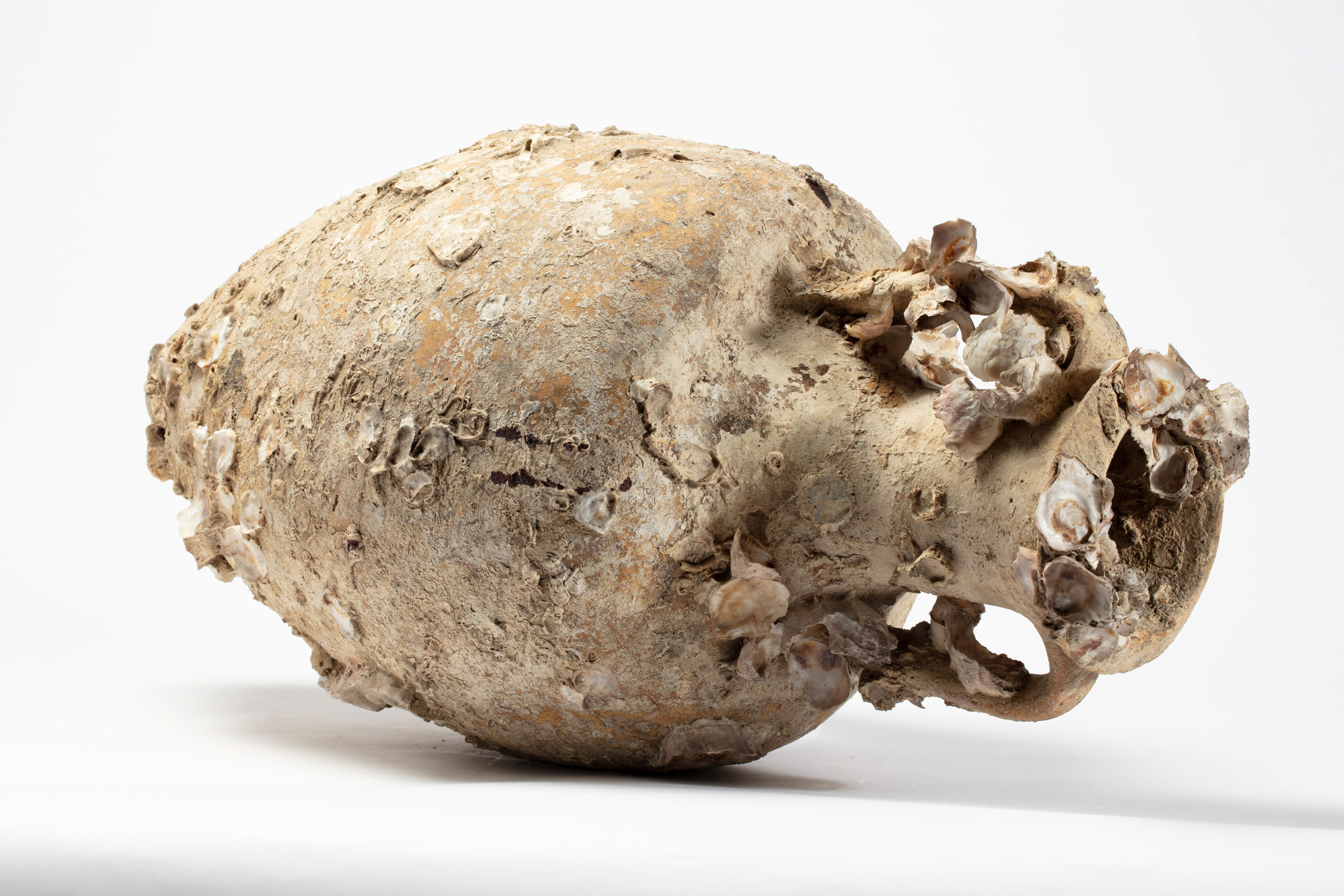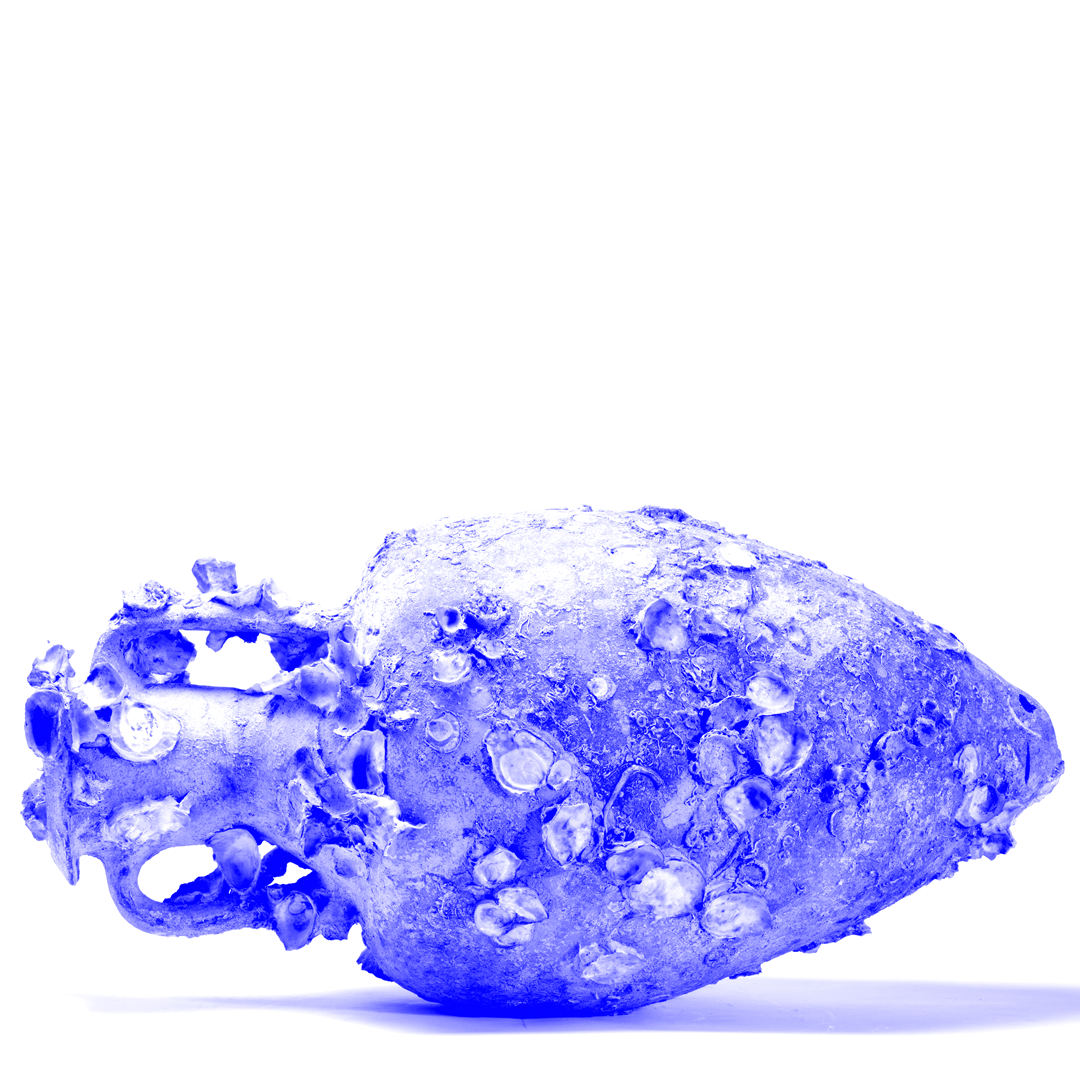This amphora must be one of the most unassuming objects on display in the Chau Chak Wing Museum. As far as ancient containers for the storage and transport of food and drink go there are many more beautiful and better-preserved specimens than this one which was cheap and produced en masse for the transportation of goods.
It made its way into the museum collection after having been recovered from its underwater resting place in the Gulf of Naples. Does the fact that it was found here mean that it was used to transport goods via ship, and perhaps lost overboard? Or was it dumped at the end of its useful life?
Or, was it lost during a harrowing maritime disaster at a point in time when GPS was not yet invented and distress-calls tended to go unheard – all libations poured to Poseidon not-withstanding? We will never know for sure. And yet it is exactly this opacity which inspires us to run through the different scenarios that might have resulted in its presence at the bottom of the sea.
The fact that this vessel has become a home for mollusks, as evidenced by the remnants of shells left behind on its surface, opens up yet other connections.
In short, this amphora is full of stories which spill out as soon as one pokes at it. Each of us, coming from a different perspective, gravitates towards different stories.
As a scholar of ancient history [JK], for me this amphora points to the fragmented and incomplete nature of the evidence that has come down to us form the ancient world. At the same time, it tells a story about trade and travel and the modes of consumption that fuelled its transport over the ‘wine-dark sea’. And yet the most interesting aspect of this amphora – for me at least – is grounded not in its ancient life but in its post-classical afterlife. In its encrusted and obviously worn state the amphora shows a dimension of history that is hard to capture and even harder to grasp: time. The amphora points to the time that separates us from the ancients (2000+ years!) and the time it takes for marine matter to grow on burnt clay (2-3 years?). As such it illustrates the capacity of ancient objects to circulate and take on new meanings long after their original use-by date. More specifically, this amphora shows the capacity of non-human creatures to reclaim the waste-products of human civilisation. We are reminded that the human animal is just one player in a much more complex web of relationships that includes multiple forms of life.
As an environmental philosopher [TvD], for me this amphora encrusted with mollusk shells immediately poses questions about the connection between the transportation of goods and the movement of animal species. In fact, one of the most high-profile cases of the potentially disruptive impact of an animal moved within networks of global trade is the arrival of another mollusk, the Zebra Mussel, in North America in the 1980s. These creatures are thought to have hitched a ride from Eurasia in the ballast of a ship. In their new home, they have proliferated, damaging ecosystems and causing millions of dollars of damage to infrastructures, like the water intakes for power plants. In this context, it is the capacity of these mollusks to securely attach themselves to objects, to accumulate and hold tight, that causes so much damage. It is this same capacity, of course, that has left such a visible mark on this amphora. Importantly, this is nothing like an isolated case. While species have been deliberately and accidentally moved all over the world since ancient times, in our present time of globalised trade the scale of these movements has increased dramatically. While not all newly arrived species cause harm in their new homes, enough do to make this a significant problem. In fact, newly arrived species have become one of the most significant causes of biodiversity loss globally. And global trade, especially shipping, is thought to be how most of these species now travel.




